In Ascalona (Ashkelon), Israel, for the first time two vaulted tombs with extraordinarily beautiful wall paintings from the Roman period are being revealed and made accessible to the public. The paintings date back at least 1,700 years, according to experts from theIsrael Antiquities Authority , and depict characters from mythology, people, plants and animals. Their unveiling, which comes after restoration and conservation work, is the result of work conducted in collaboration between the Ashkelon Municipality and the Israel Antiquities Authority.
These ancient vaulted structures are located near the Ashkelon marina, in a public area located between several residential high-rise buildings. The municipality decided to make the site accessible to the public, and as a result this previously neglected area has been turned into a public garden: even a simple glance inside immediately opens a window to a fascinating ancient world.
“Ashkelon,” says Mayor Tomer Glam, “is one of the oldest cities in the world, and as we shape and plan the city’s future, we ensure a place of honor for its glorious and rich past. In recent years we have made a real revolution in the field of historic site preservation. We have made the sites accessible to city residents and the general public, then organized events and produced educational, cultural and tourism programs with the aim of connecting the city’s history to its present. This is an appropriate time to thank Vice Mayor Miri Altit for her comprehensive professional work in this endeavor and to thank the Israel Antiquities Authority for this cooperation of such immense importance, which has helped us position Ashkelon as Israel’s city of antiquities.”
The site was discovered in the 1930s, about 300 meters from the beach in Ascalon: it appeared as a vaulted tomb filled with sand. The structure of the tomb was excavated by a British expedition and dated to the early fourth century AD, and consists of a hall with four adjacent burial chambers. This passage is decorated with a series of paintings, impressive in quality and skill, and include depictions such as that of Demeter, the mythological Greek goddess of earth and grain. Other images are of plants such as vines and bunches of grapes; different kinds of leaves and branches; and depictions of nymphs, mythological figures related to nature; their heads adorned with garlands of lotus plants and holding jugs from which water flows. There are also birds, deer, putti picking bunches of grapes and gathering them into baskets, a figure playing the Pan flute, and several other images, most notably the head of Jellyfish, a monstrous female face with hair made of snakes.
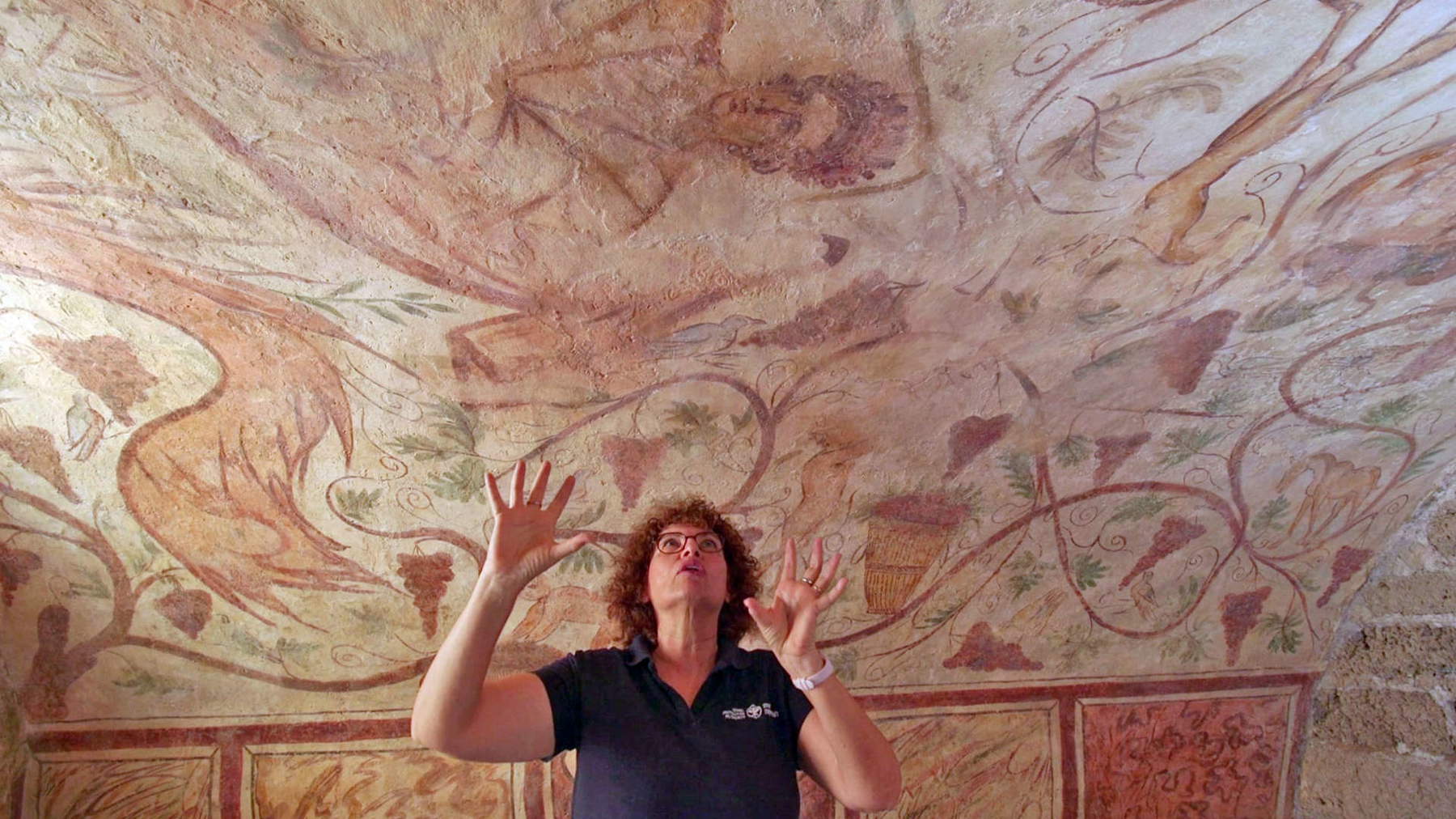
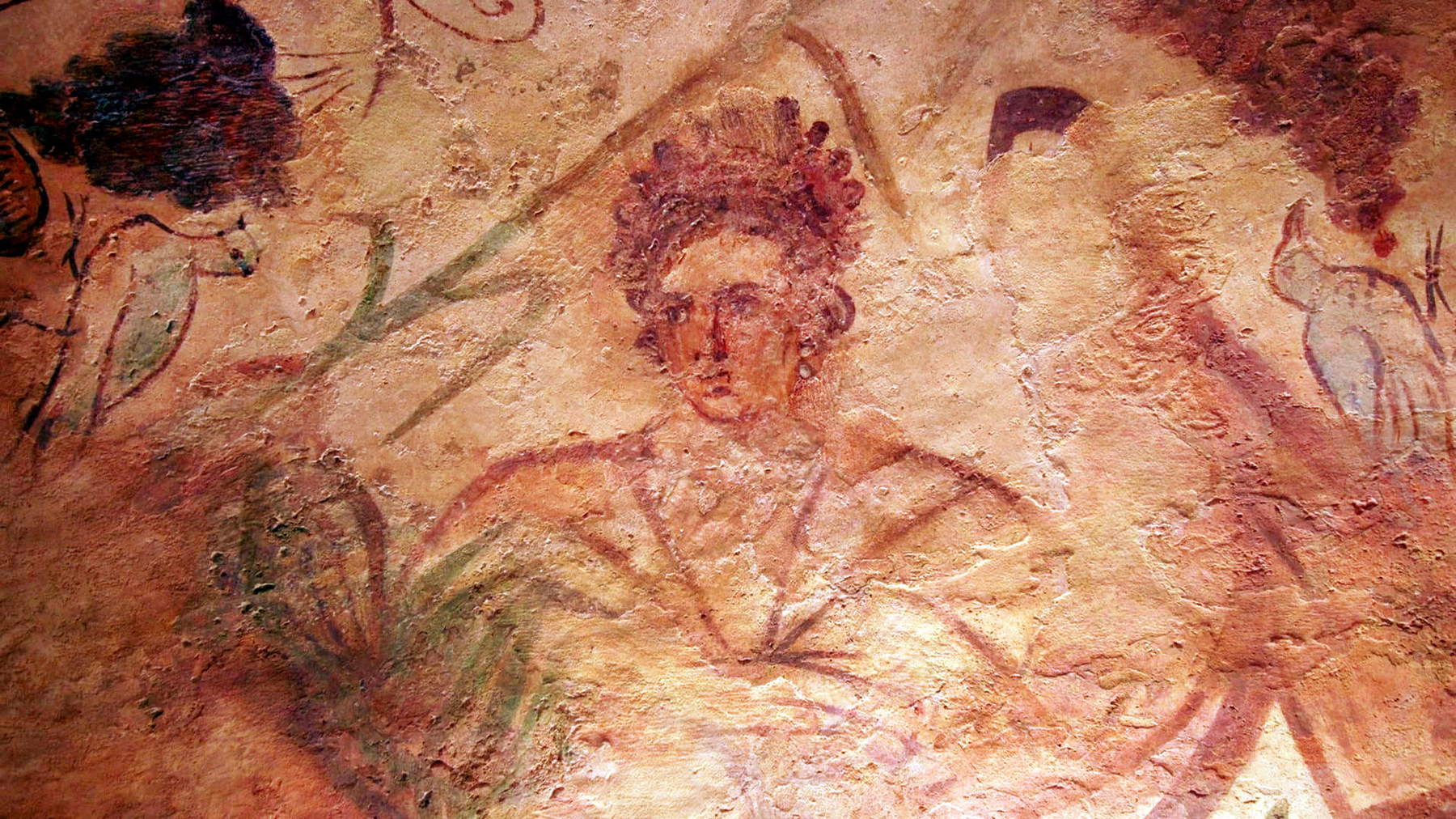
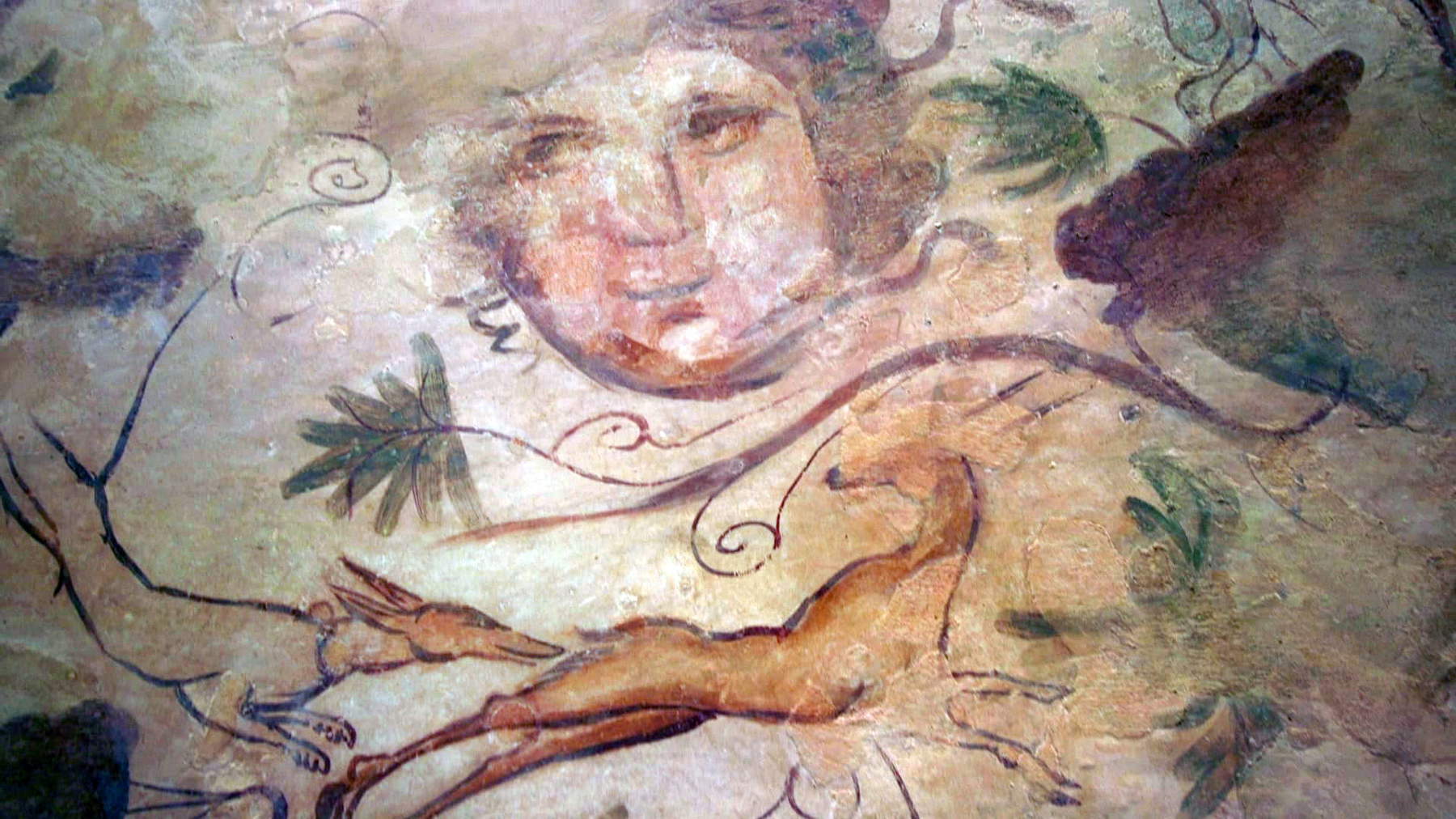
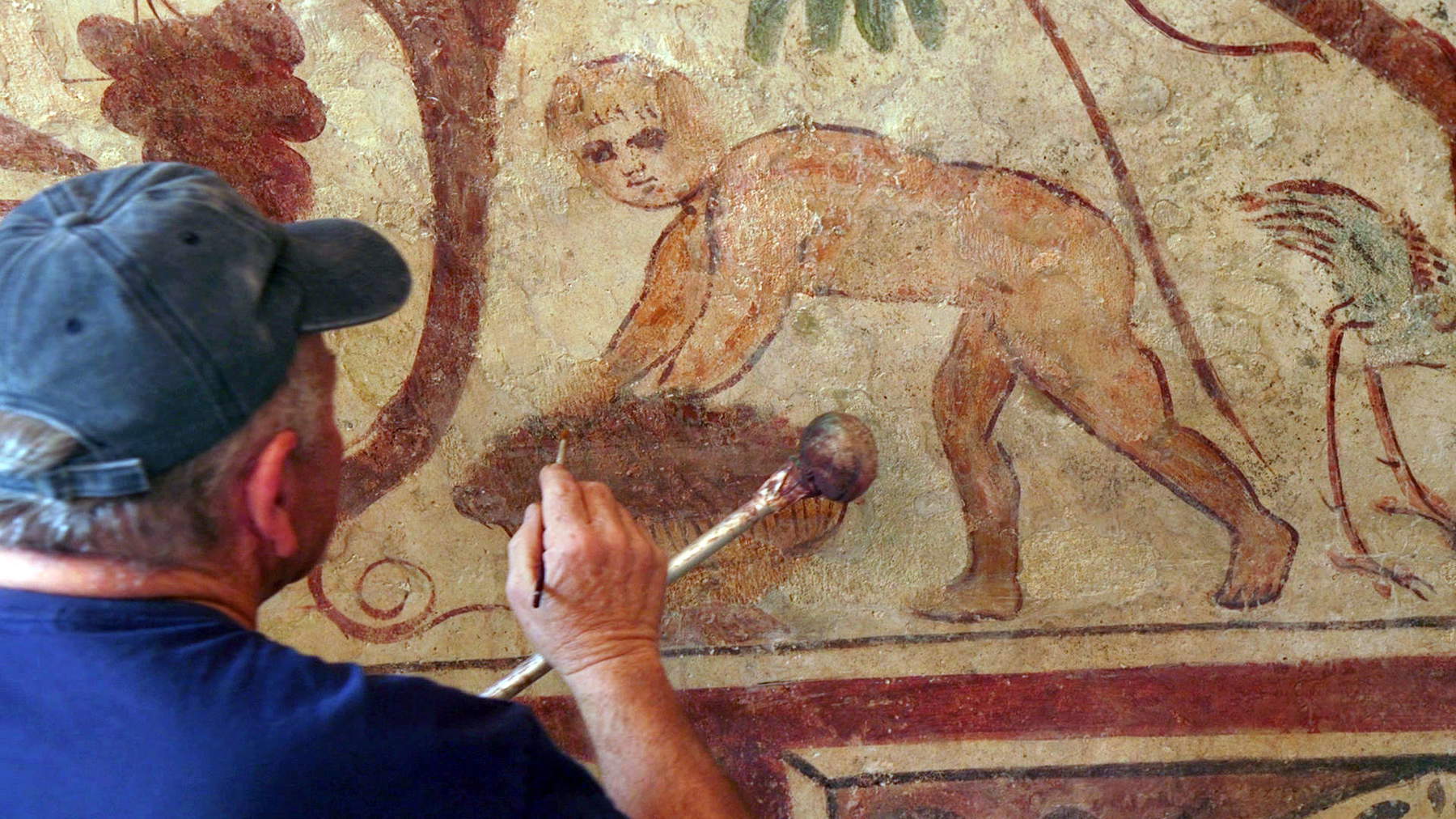
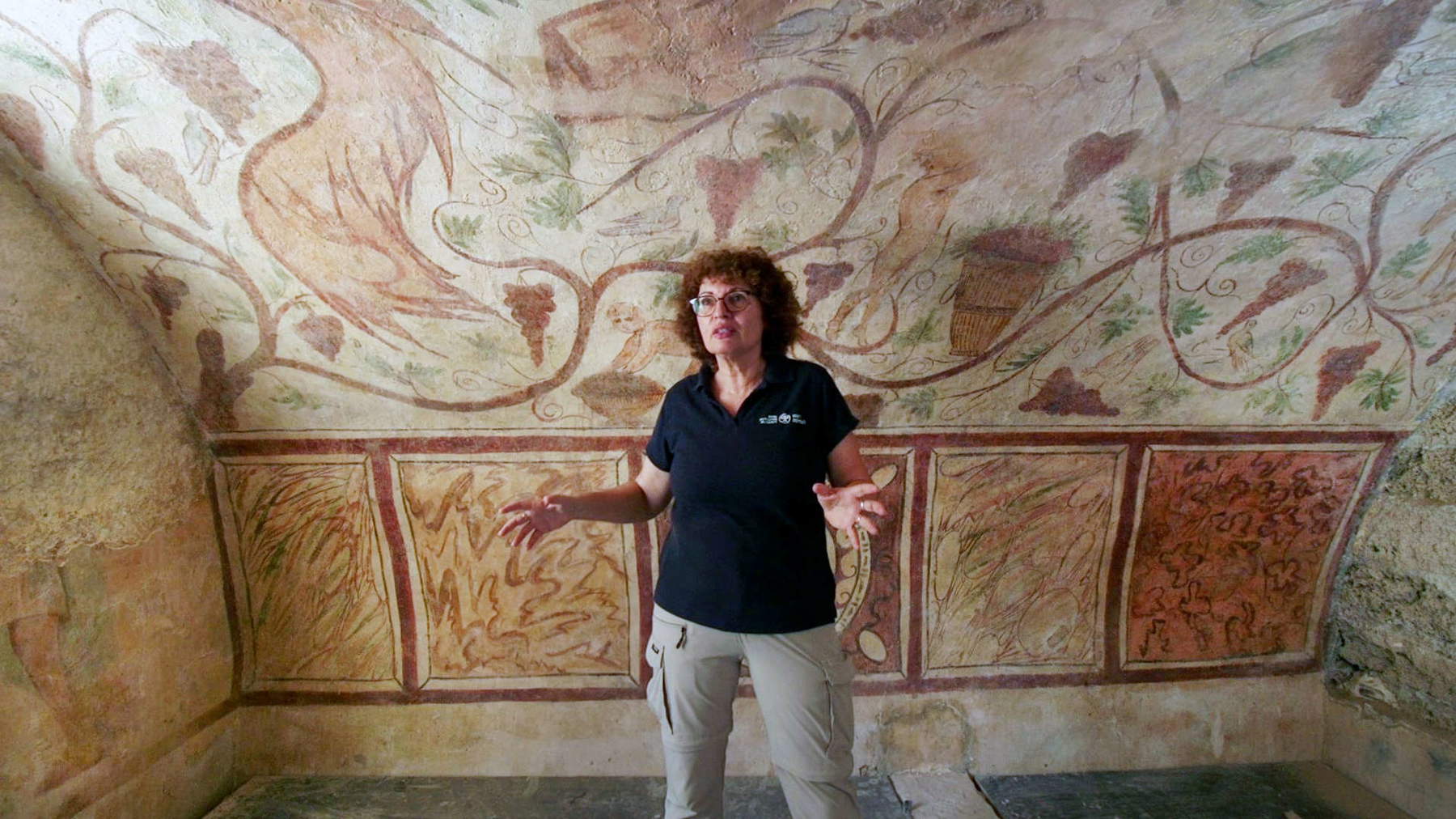
Another vaulted and decorated tomb in the public garden was moved here from another site in Ashkelon back in the 1990s to ensure its preservation. This tomb, which was discovered during excavations by Dr. Elena Kogan-Zehavi of the Israel Antiquities Authority, dates back to the second century A.D.: in the center of the building is a hall whose walls are decorated with colorful paintings of human figures, birds and other images from the animal and plant world. Surrounding the hall are vaulted loculi, in which lead coffins decorated with human, animal and plant images have been discovered.
Over the past few months, these structures and their decorations have been preserved through a complex intervention carried out by Vladimir Bitman, David Kirakosian, Alexei Ronkin and Yoni Tirosh HaCohen, experts from the conservation department at the Israel Antiquities Authority. According to Mark Abrahami, head of the Authority’s art conservation department, “ancient wall paintings are usually not preserved in Israel’s humid climate. Because the paintings were in a relatively enclosed structure, this protected them, to some extent, for decades. Of course, exposing the centuries-old painting to the air and humidity caused fading and deterioration. We had to conduct a long and delicate process to stop and repair the damage of time and deterioration. Some paintings had to be removed from the walls for full treatment in the Israel Antiquities Authority’s conservation laboratories until they were returned to the site. The other walls of the structure were cleaned, the pigments in the colors of the paintings were accentuated, and the entire building was strengthened and stabilized to preserve it for future generations.”
In recent years, the Ashkelon municipality has invested considerable resources in the care and development of the city’s ancient sites in cooperation with the Israel Antiquities Authority. Among other works, a large public park has been opened in the new Wine City neighborhood, with an ancient industrial site at its center. This complex includes wine and olive presses, warehouses, a bathhouse and more.
When the public garden is opened for the upcoming holidays, Ashkelon residents, Israeli visitors and tourists from around the world will be able to admire these rare paintings and thus learn about the fascinating past history of this vibrant modern port city.
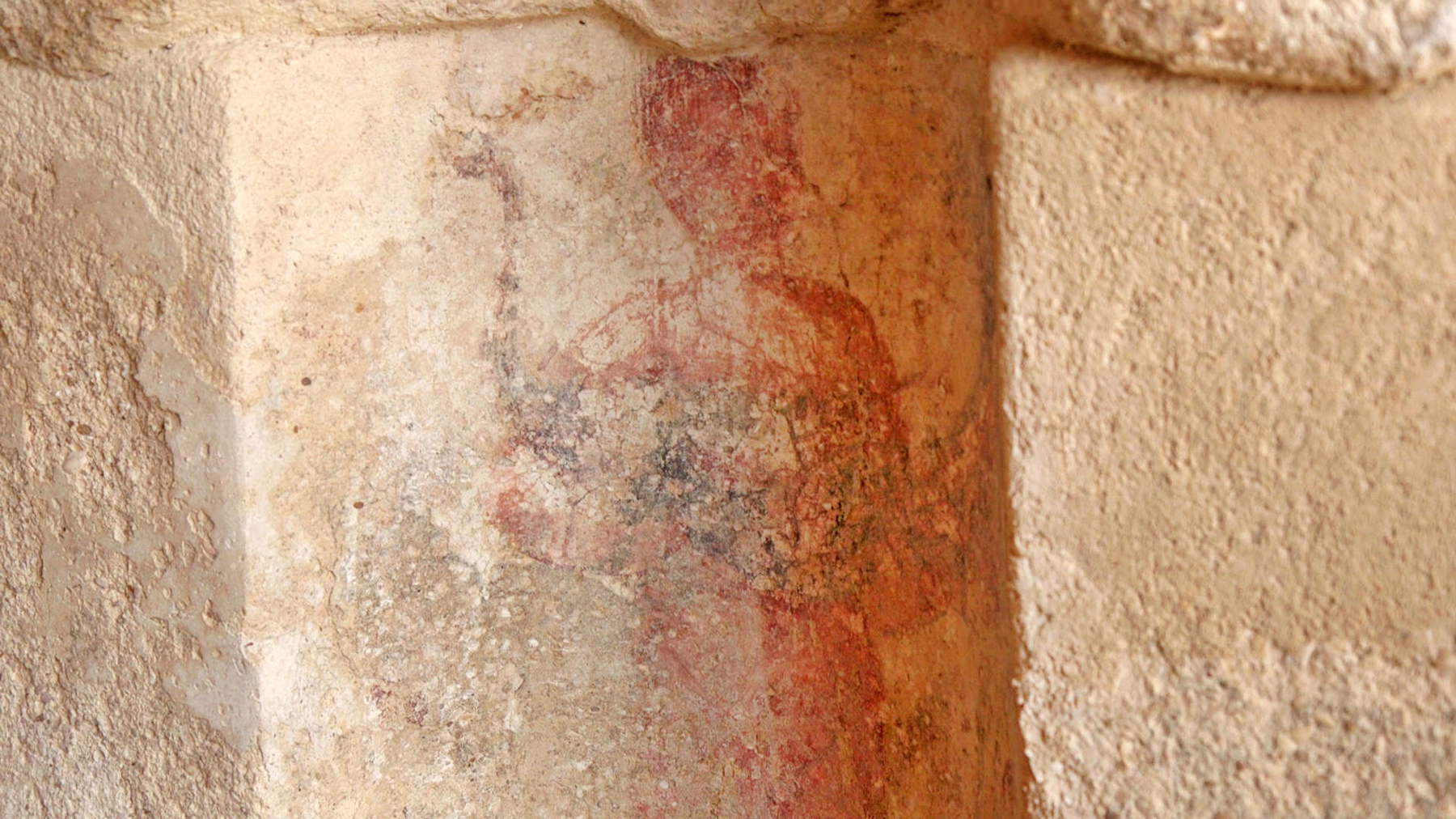
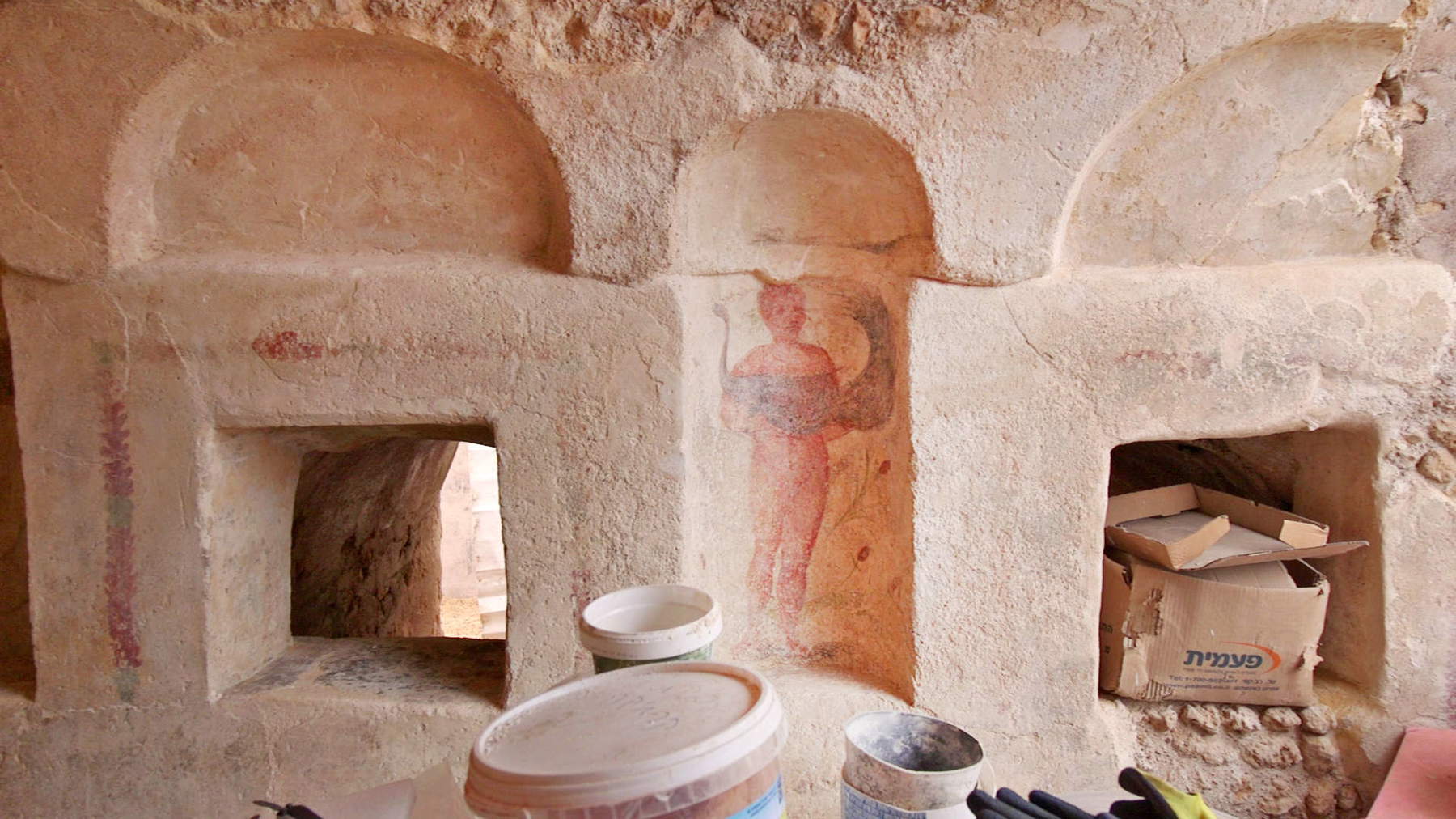
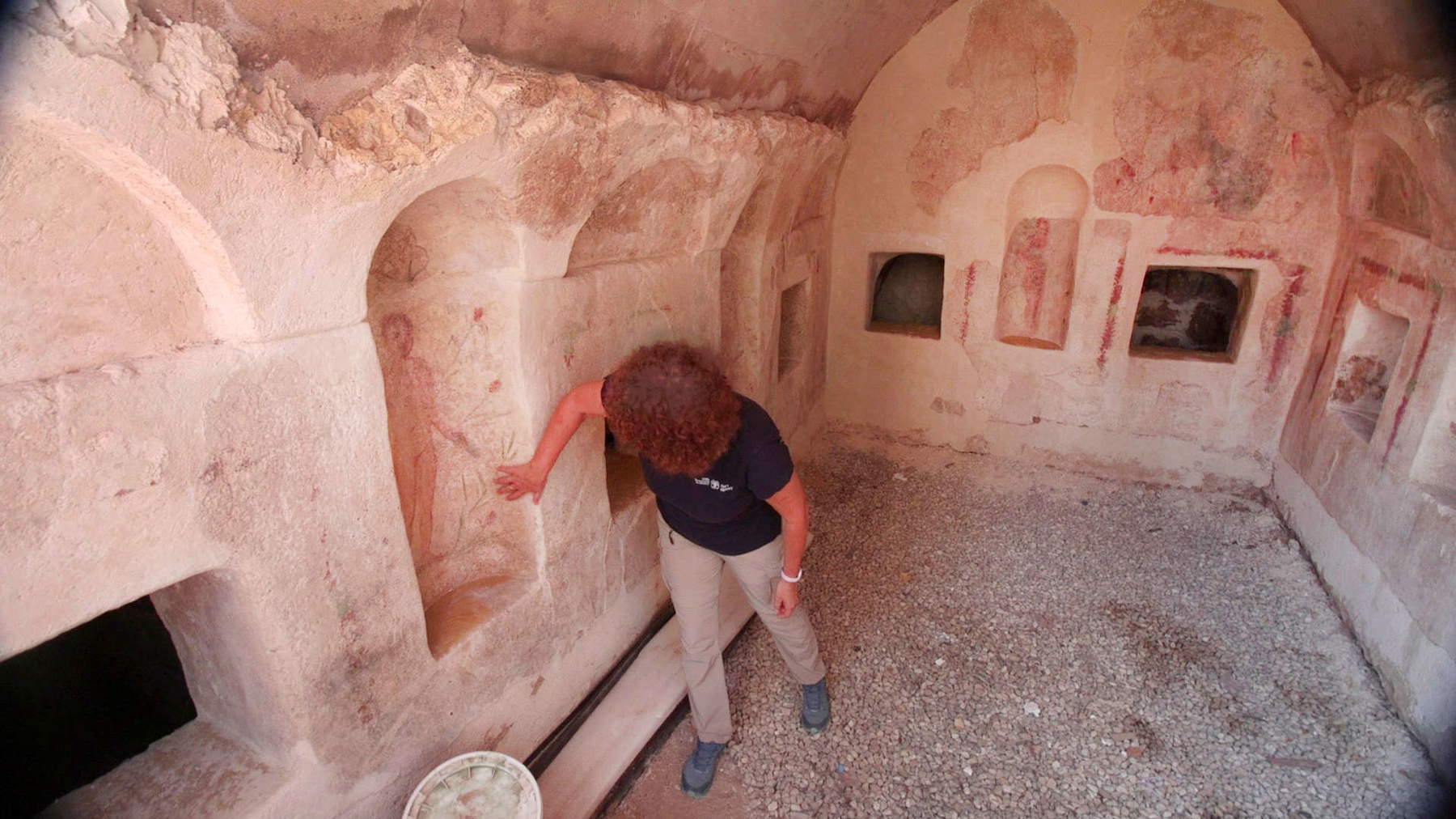
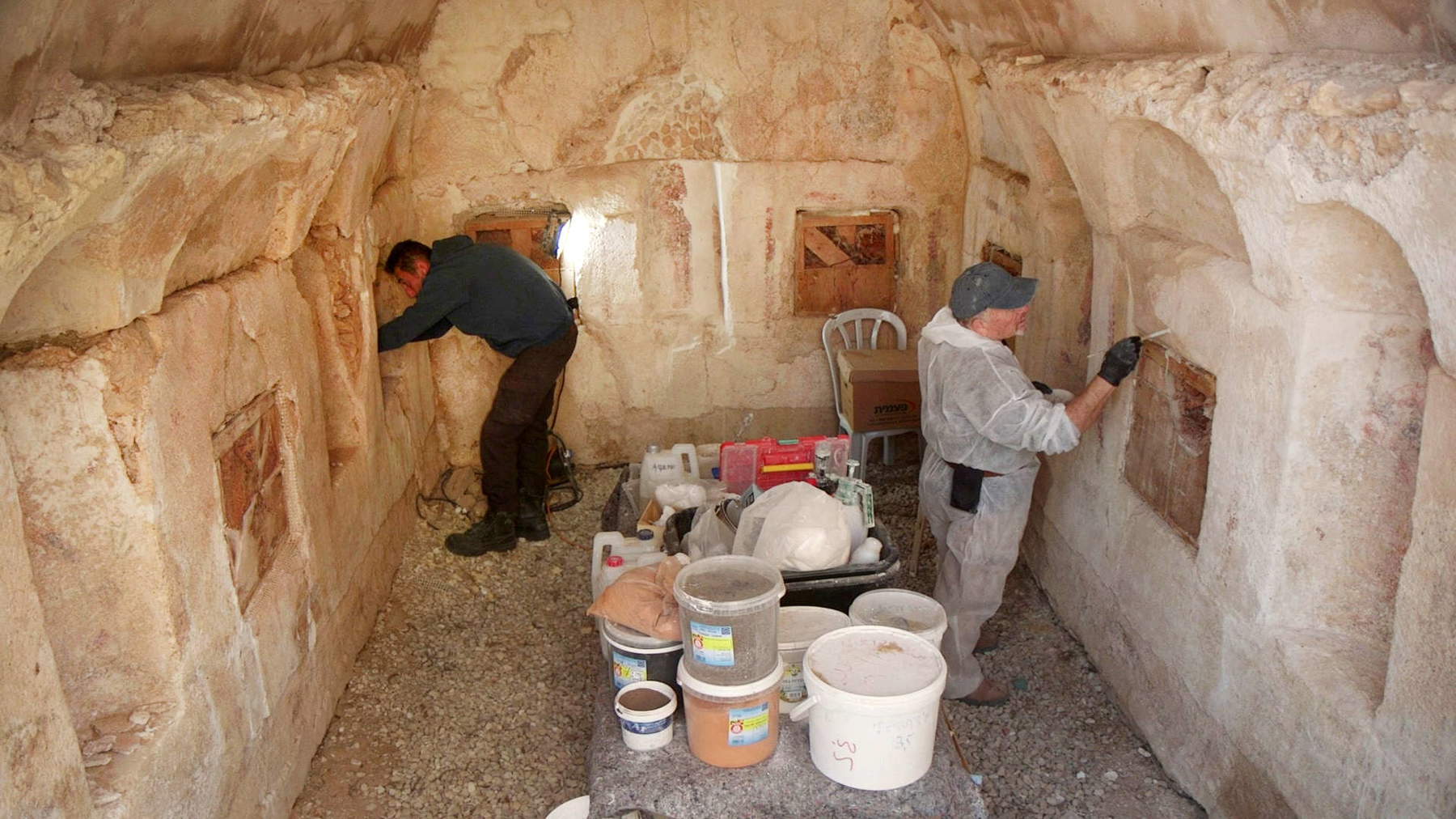
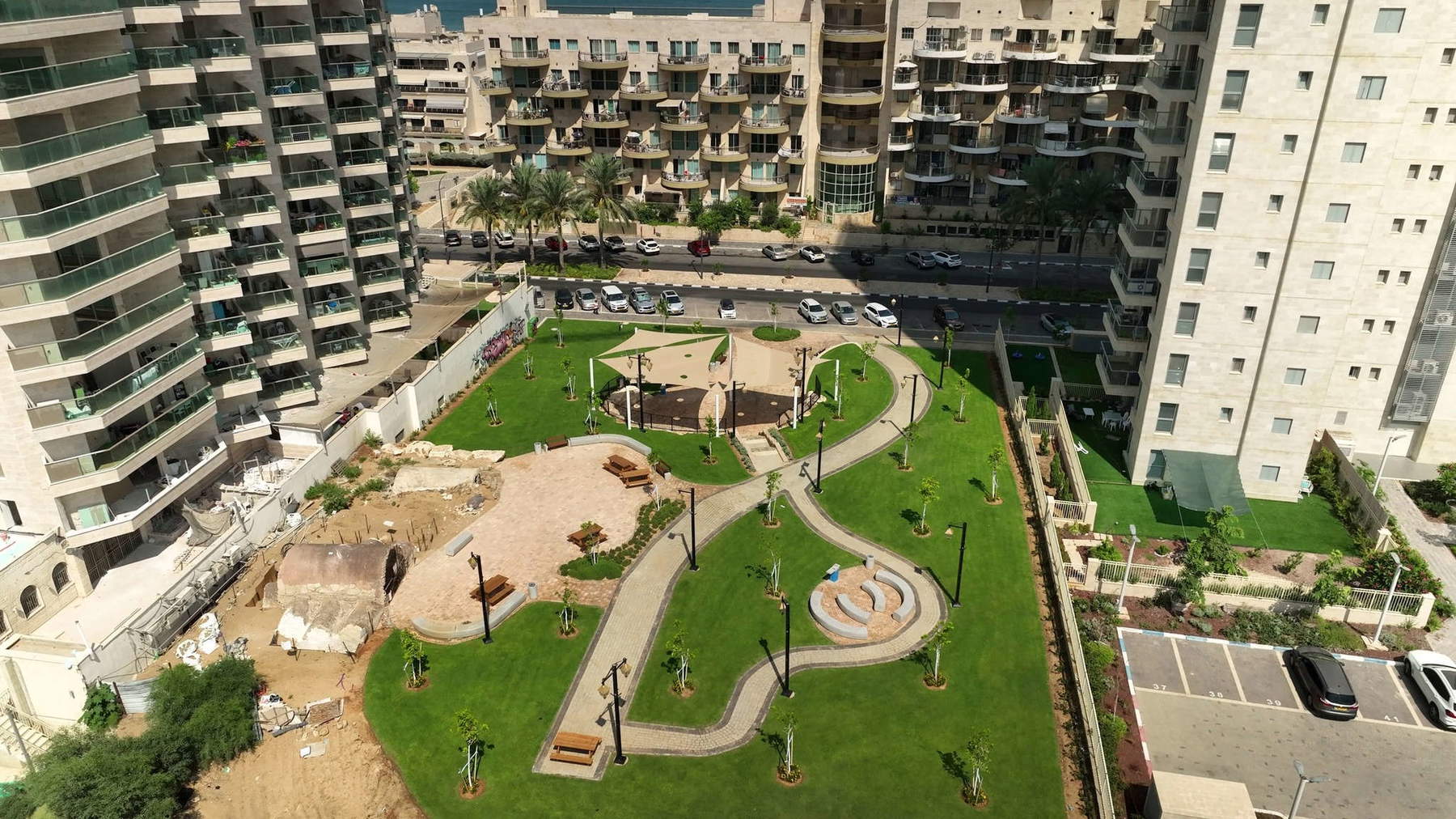
According to Eli Escusido, director of the Israel Antiquities Authority, “The city of Ashkelon is one of the first in Israel that are acting wisely to harness the enormous potential of values and aesthetics embodied in its heritage assets. Ashkelon is an example of integrating ancient artifacts into the urban fabric, in cooperation with the Israel Antiquities Authority, in a way that adds further value and arouses interest in its public spaces. I am very happy indeed that at last, thanks to this valuable collaboration with the Ashkelon Municipality and thanks to the professional work of our restorers, Ashkelon residents and visitors will soon be able to enjoy the extraordinary and impressive view of these decorated tombs.”
According to Mirey Altit, deputy mayor of Ashkelon and head of historic sites preservation in Ashkelon Municipality, “Together with Mayor Tomer Glam, we have made and continue to make a revolution in the field of historic sites preservation in our city. Alongside the preservation work in cooperation with the Antiquities Authority, we are taking care of making the historic sites accessible to the general public, developing their surroundings and carrying out educational and cultural activities within them. We invite you to come to the city and enjoy all that Ashkelon has to offer, including in the field of antiquities and archaeology.”
 |
| Israel, splendid Roman tombs unveiled for first time in Ashkelon |
Warning: the translation into English of the original Italian article was created using automatic tools. We undertake to review all articles, but we do not guarantee the total absence of inaccuracies in the translation due to the program. You can find the original by clicking on the ITA button. If you find any mistake,please contact us.